One Day in Brussels
A few last minute changes to our travel itinerary meant that Kapil and I had only one day in Brussels in late October last year. We hadn’t planned for it to be that way, never the less, we were going to make the most of our very short trip to the capital of Belgium. We decided we would explore the city on foot, walking to as many of the major highlights as possible. We didn’t enter any of the monuments or museums because we didn’t want to spend time indoors or standing in queues for entry tickets instead of being outdoors, soaking in the atmosphere of the city. Here’s the low-down on our action-packed day in Bruxelles:
Comic Strip Walls: We had arrived by train from Lucerne (Switzerland) the previous night and our hotel was close to almost everything we wanted to cover. We started our day early. After a quick breakfast at the hotel, we walked out to find some of the landmarks on the Comic Strip Walk. Yes, you heard right. The City of Brussels has a unique comic strip route that takes people along several walls in the city with big paintings of famous comic book heroes.

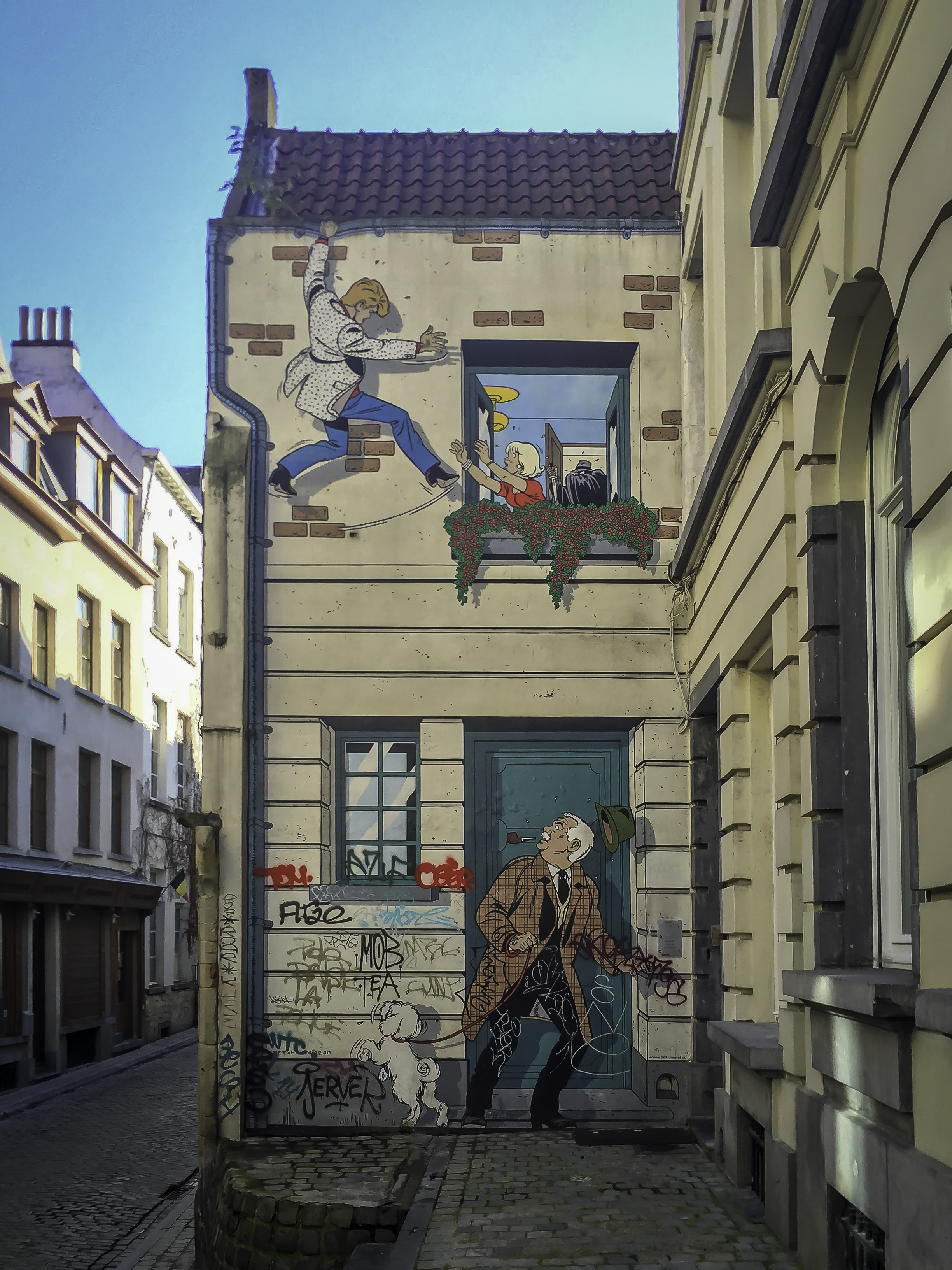
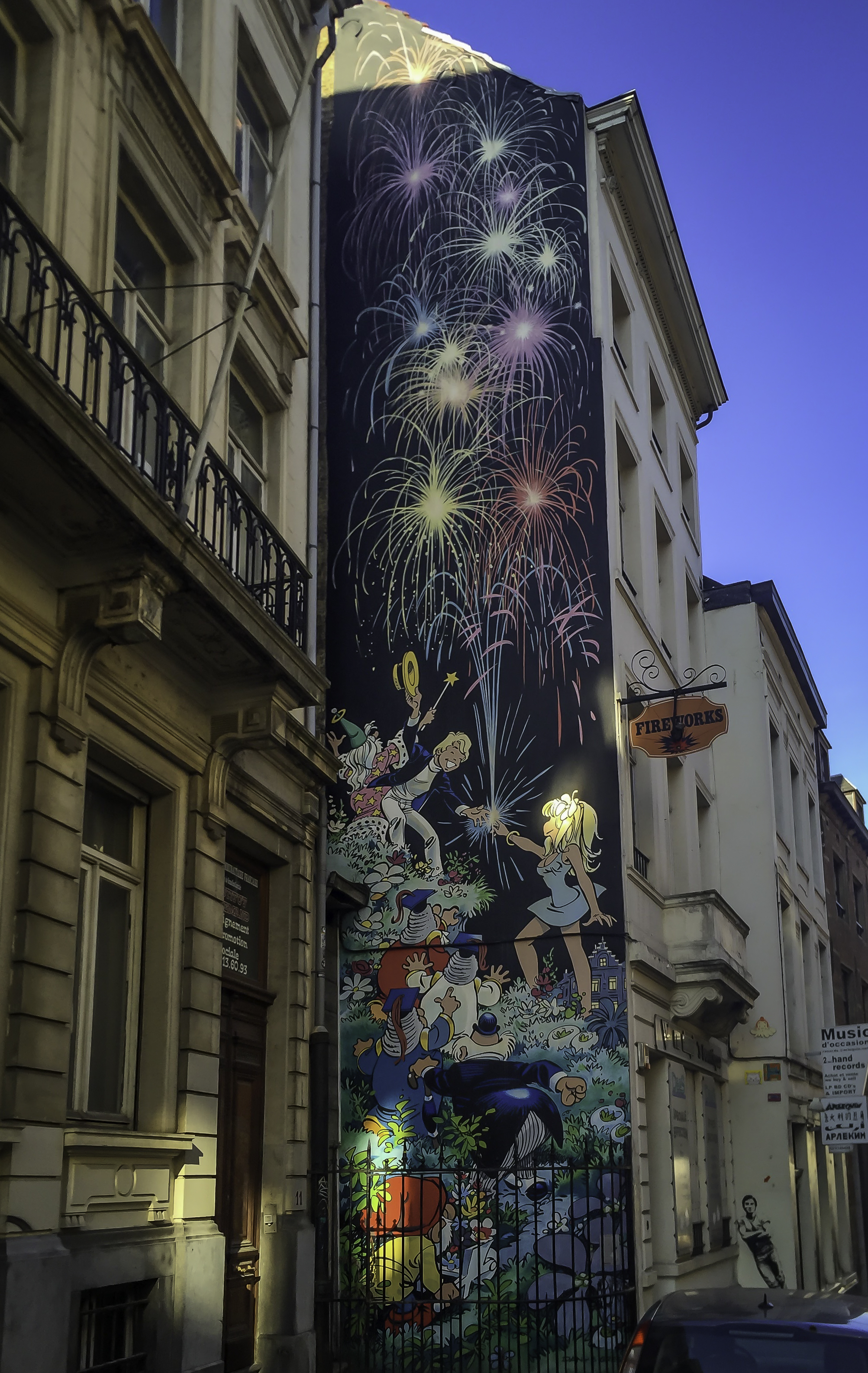
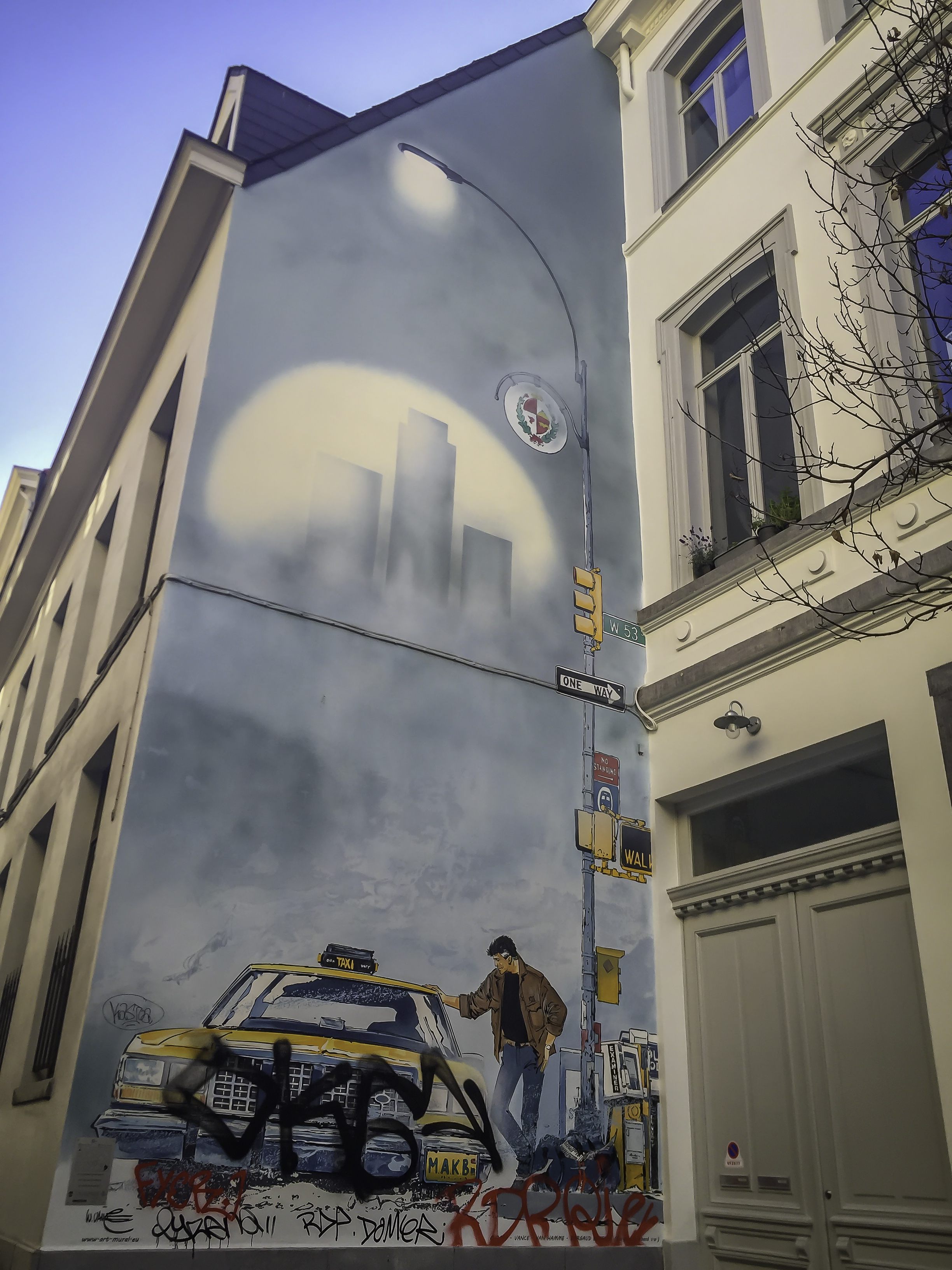

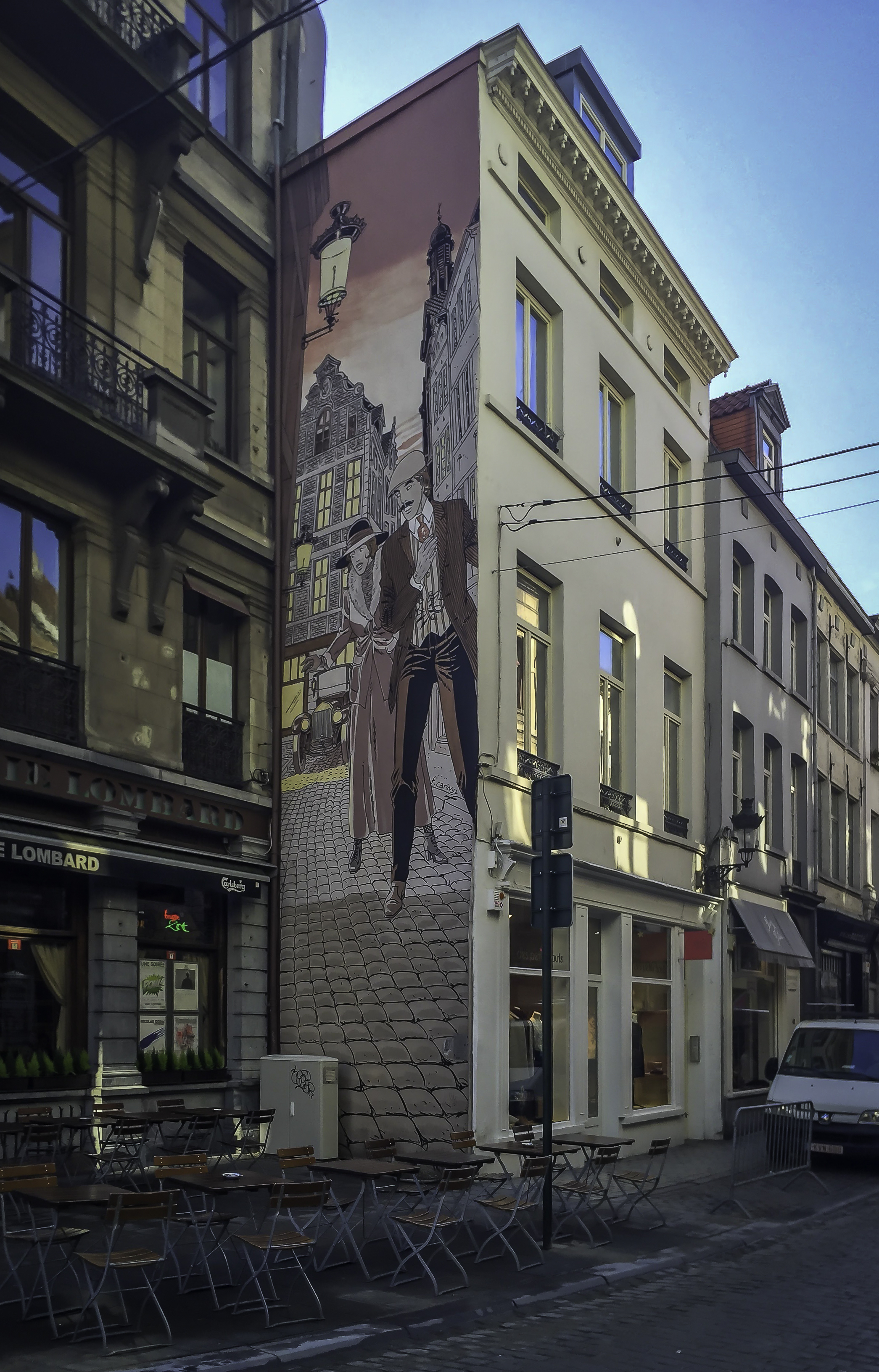
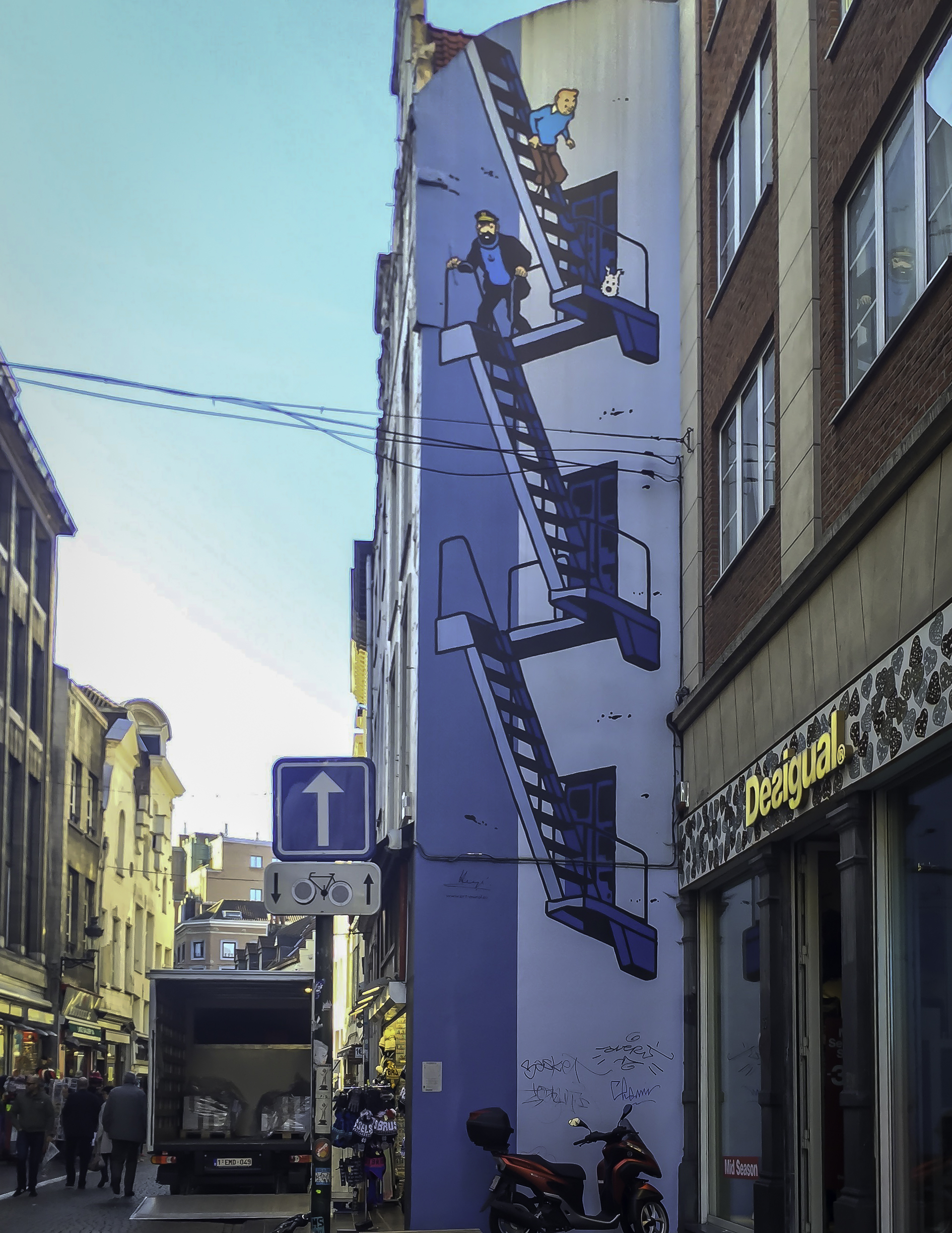
Manneken Pis: We stood for a few minutes in front of Manneken Pis—the famous bronze statue of a naked little boy urinating into a fountain's basin. “That’s it?” we thought. If not for the crowd around it, I suspect we would have had trouble spotting it. However, we promptly got over our disappointment after a Belgian chocolate fix from the Godiva shop nearby.
Grand Place: Grand Place or Grokt Markt, a UNESCO World Heritage Site, is the central square of Brussels. One of the most famous landmarks of Brussels, it has the city’s Town Hall on one side, the Museum of the City of Brussels on the other, in addition to opulent guildhalls, chocolate shops and restaurants. We stopped here for pictures and to sample some more Belgian chocolate at Mary Chocolatier.
Mont des Arts: We walked up to the Mont des Arts. Situated between Grand Place and Sablon, Mont des Arts is a complex of large imposing buildings such as the Bibliothèque Albert I, the Palais de la Dynastie and Palais de Congrès. It occupies the elevated site between the Place Royale and the Place de l'Albertine, and offers great views down to Grand Place and up towards the Palais Royal de Bruxelles (The Royal Palace).
We walked past the Palais Royal de Bruxelles and headed down towards Palais de Justice (Palace of Justice – The Supreme Court of Law in Belgium). On the way there we stopped to admire the flamboyant gothic style of the Église Notre Dame du Sablon. We just had to step inside to look at the beautiful stain-glass windows.
Sitting on top of Galgenberg hill (Gallows Hill), the Palais de Justice covers a surface area larger than St Peter’s Basilica in the Vatican. Due to renovations, the facade of the Palais de Justice was covered in scaffolding when we were there, still this mammoth structure looked impressive.
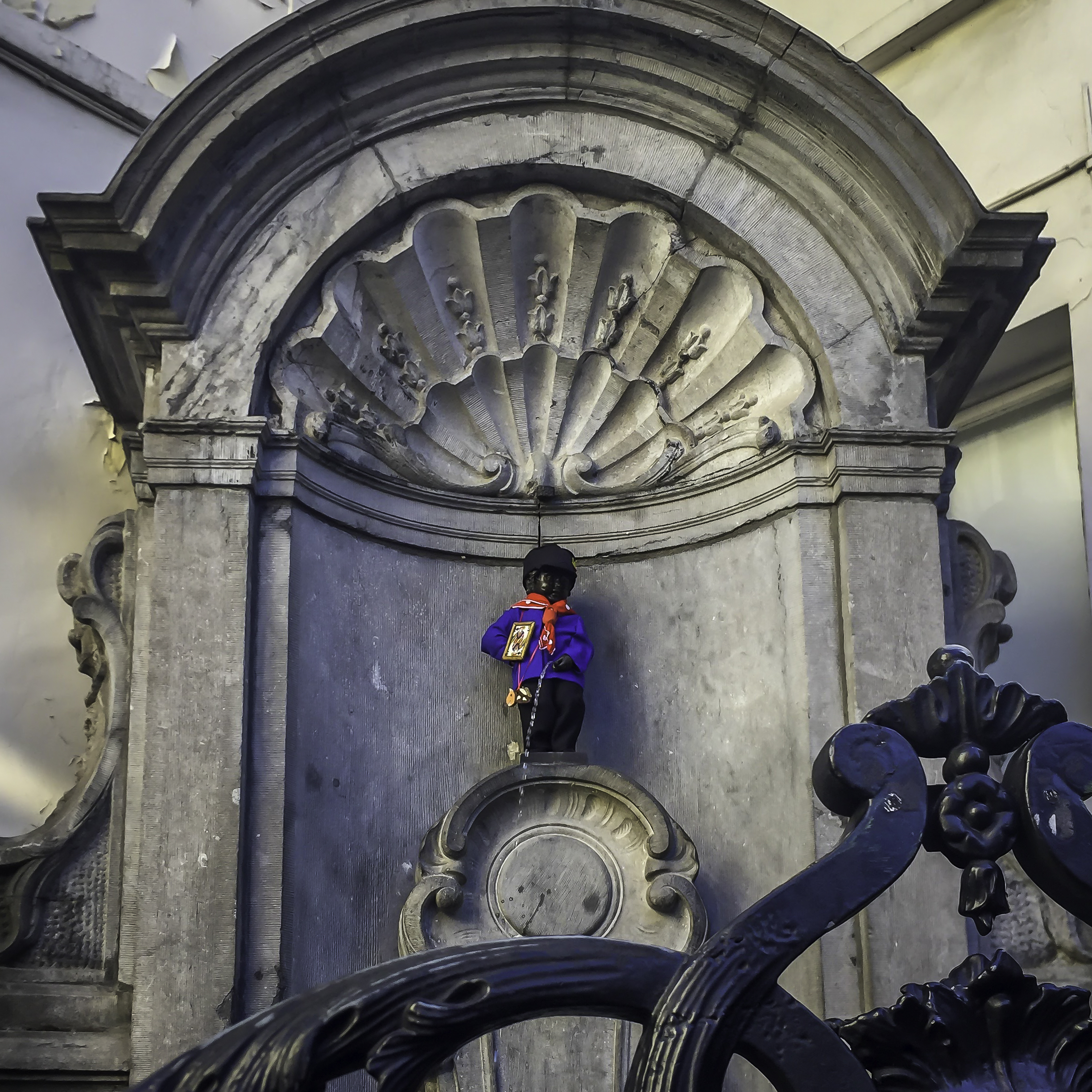
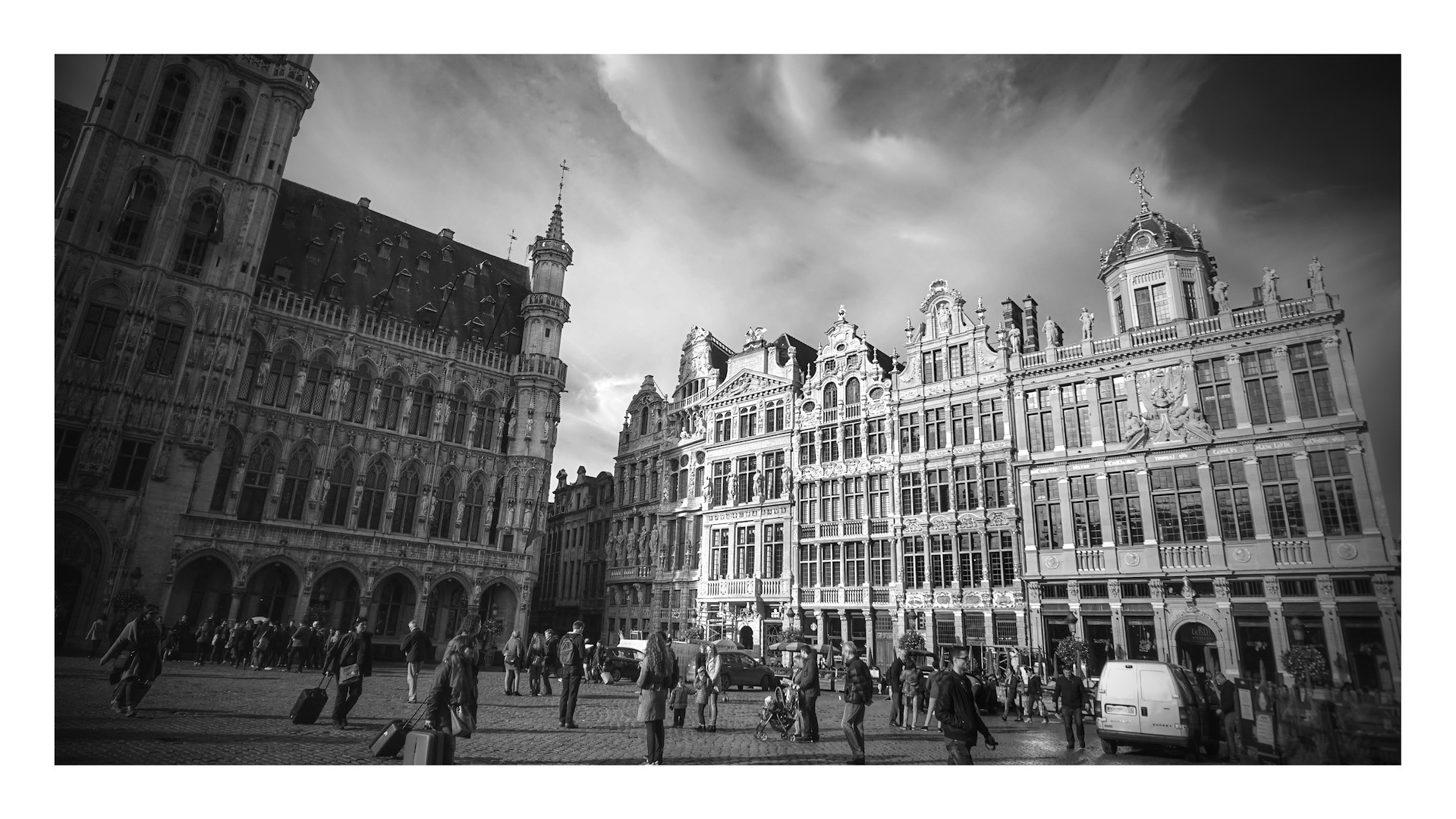
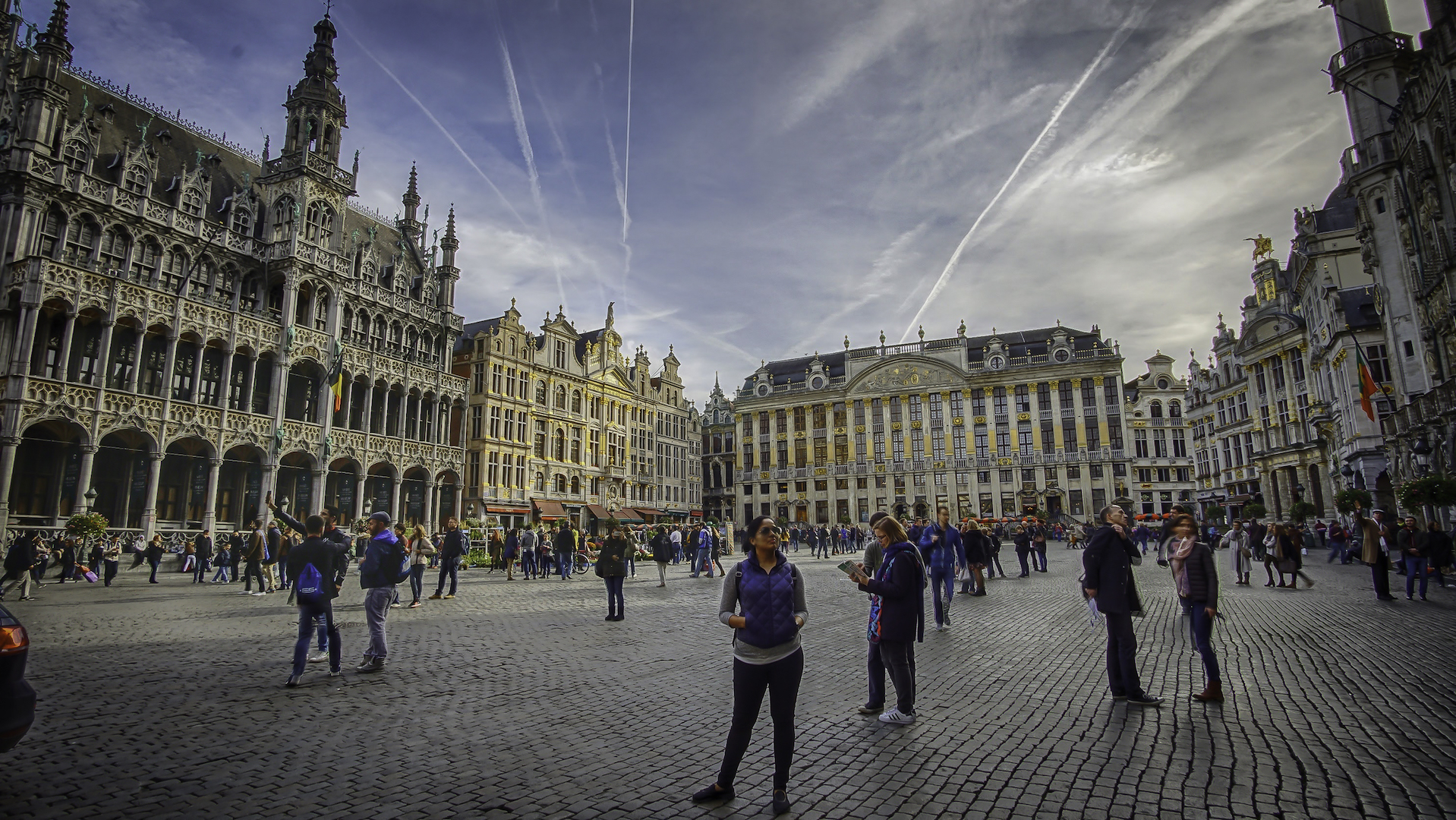


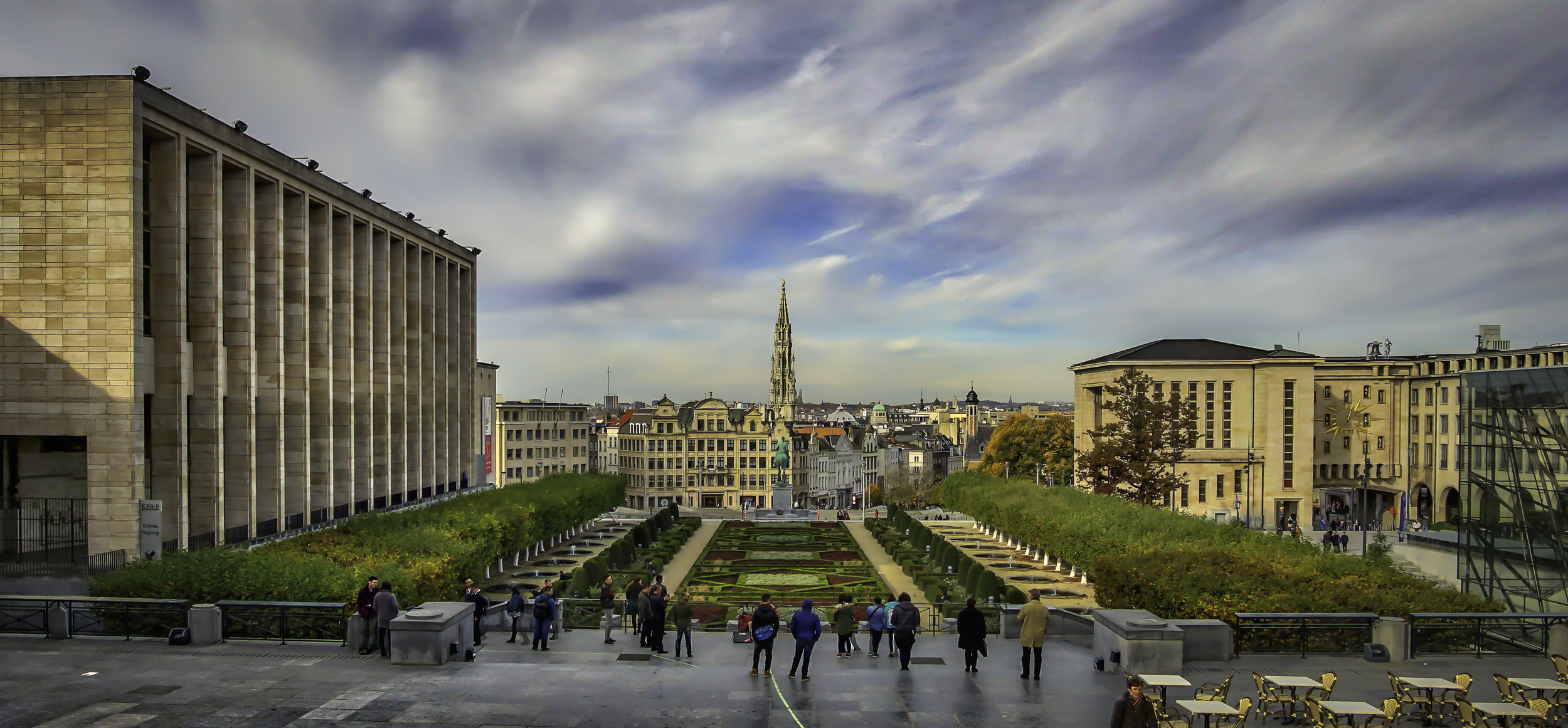
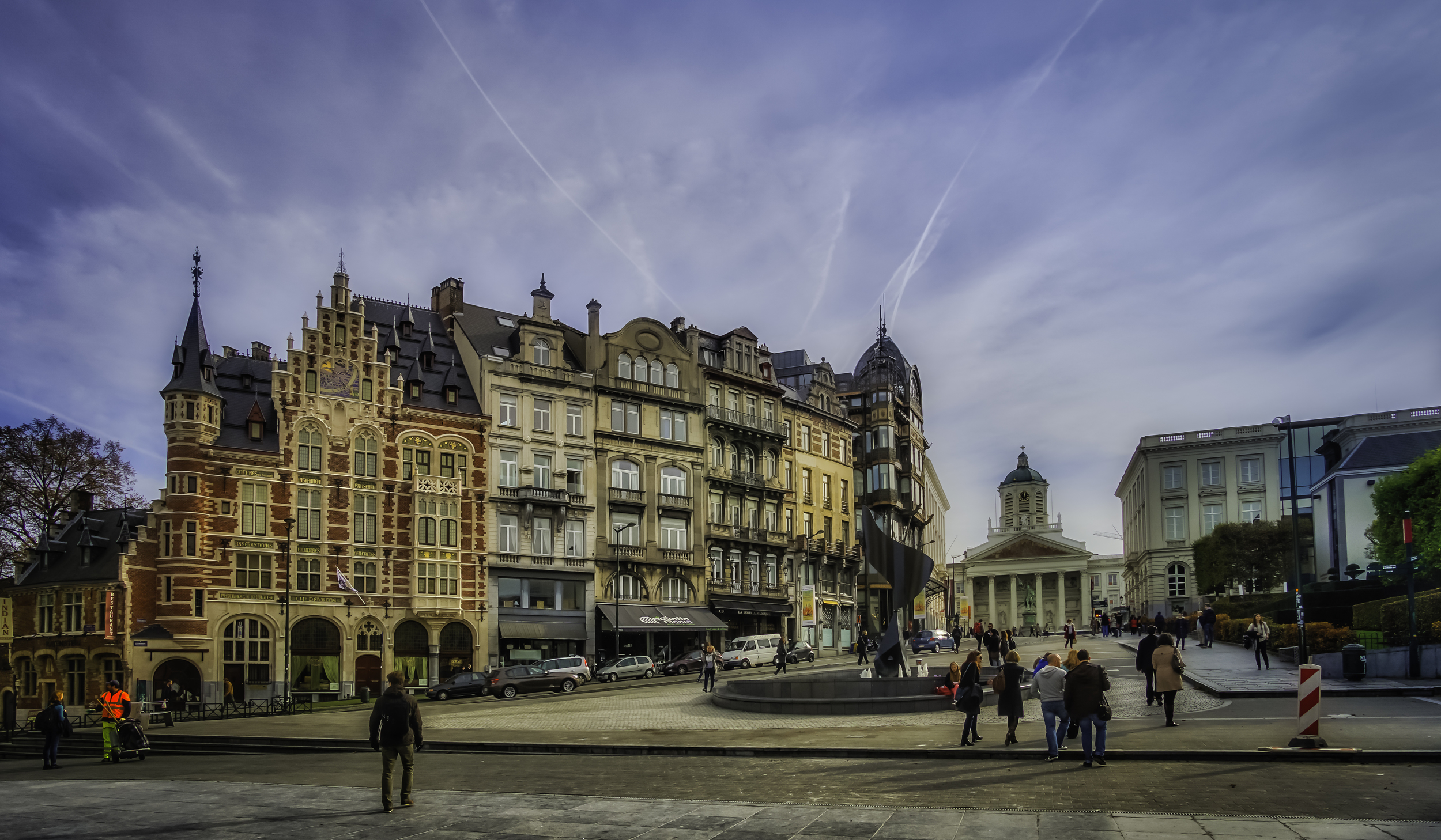

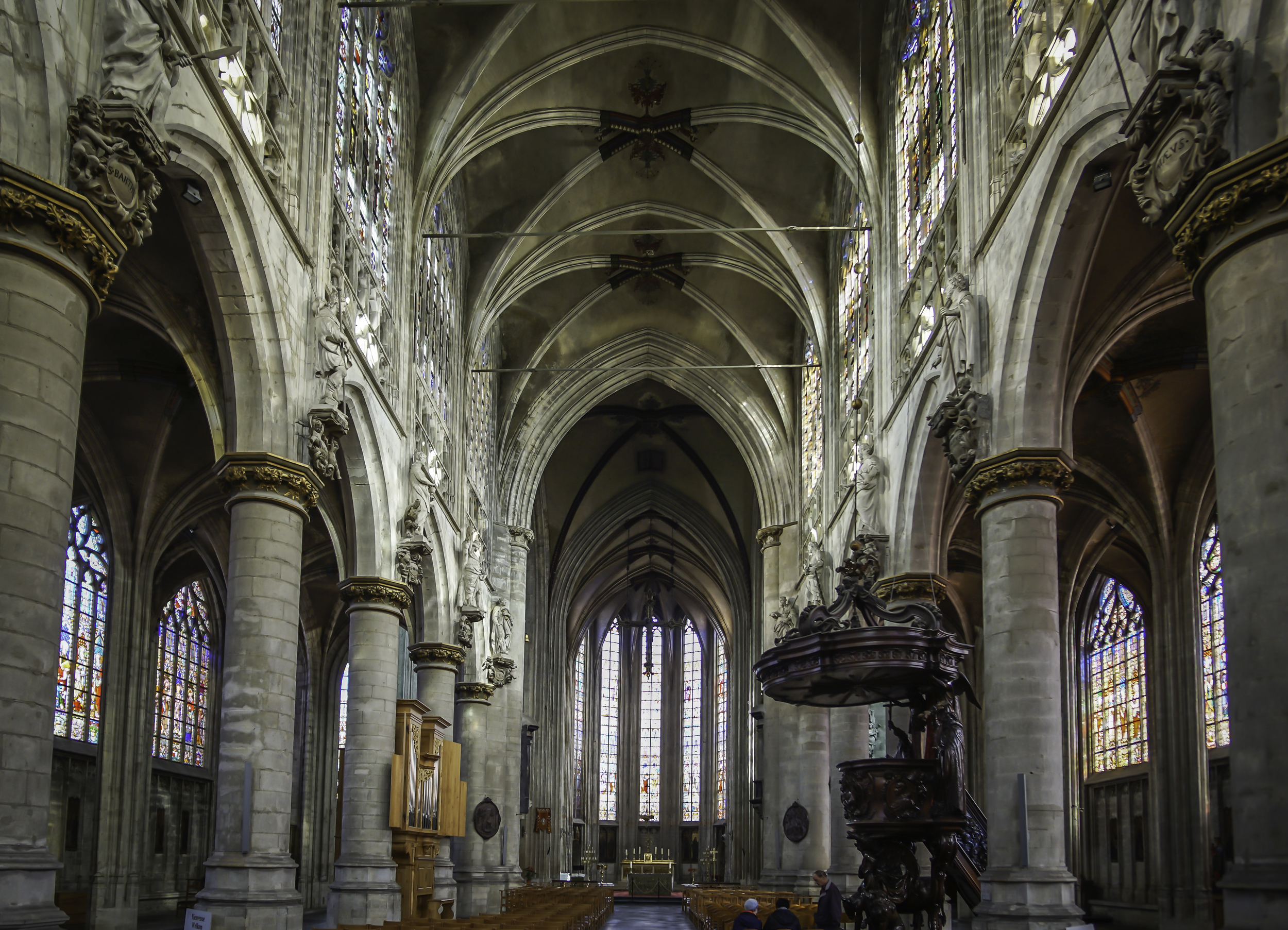
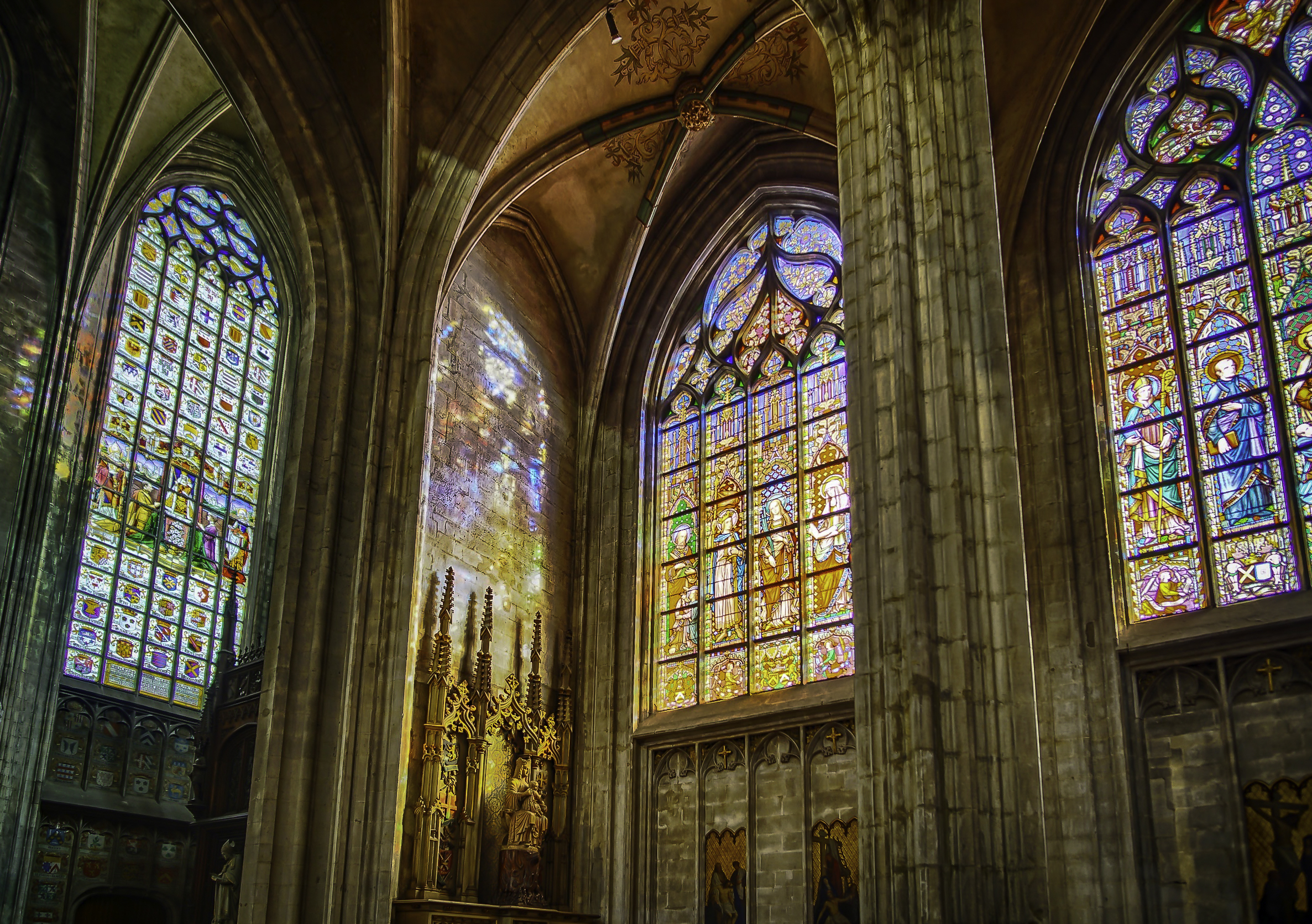



To the right of the Palais de Justice, Place Poelaert offers sweeping views over the city. From here there is a glass elevator that takes you down into Marolles. Quartier Marolles used to be the poorer section of the city and is now a multicultural area known for good antique shops and a flea market on Place du Jue de Balle. By this time we only had half the day left so we did not take the elevator down to Marolles.
After spending a few minutes gazing over the city from Place Poelaert, we headed back down Rue de la Régence towards Église Notre Dame du Sablon and turned into Rue des Sablons to wander around Sablon.
The Sablon is a charming neighbourhood on a hill in the upper historic part of Brussels. At its centre are the famous twin squares—the larger Grand Sablon (or Grote Zavel) and the smaller Petit Sablon (Kleine Zavel). Place du Grand Sablon is home to high-end antique shops, restaurants, Belgian chocolate and confectionery stores, and an antiques and book market every weekend. We wandered in to the area right in the middle of lunchtime. The massive crowds and chaos made it impossible to stand still long enough to even get a decent photograph. So we walked right on, down Rue Joseph Stevens towards Friture de la Chapelle right outside Église Notre-Dame de la Chapelle.
The real sight here was of course the huge church (Église) in the background, but we were on an altogether different quest. Earlier in the day we had gone in to a visitor information centre—Bureau d’informatons Flandre et Bruxelles on Rue du Marché aux Herbes— to purchase a map of the city for 1Euro. A friendly staff member there had recommended we head to the Friture de la Chapelle for frites.
Frites: The Belgians insist that these savoury morsels of deep-fried potato deliciousness that we all call French fries originated in Belgium. The French disagree. Frites (fries) shops abound in the city of Brussels and you will find long lines outside many of these based on their ranking (yes, ranking!). We’d decided to skip the serpentine lines and head straight to Friture Pitta de la Chapelle since it was recommended by a local. We were not disappointed. Not only was the line in front of this fry shack way shorter, the delicious frites helped tide us over until our very late lunch.
Lunch at Waffle Factory (on Rue du Lombard) consisted of savoury and sweet waffles. We waddled back to our (nearby) hotel room to rest our tired feet for a bit. A short while later we set off again to check out a few more comic strip walls and buy Kapil a new pair of shoes to replace a pair that had all but disintegrated.
At dusk we headed into Galeries Royales St Hubert, a beautiful shopping arcade right in the heart of the city. The arcade has a high glass roof and houses luxury boutiques, watchmakers, cafes and restaurants.
Outside the Galeries Royales on the corner of Rue Montagne-aux-Herbes-Potagères, we spotted “La Cycliste”. This famous sculpture of a cat on a bike by artist Alain Séchas is said to have cost the city of Brussels a sum of 100,000 €.
By this time we were ready for a thirst quencher and knew exactly where to go—A la Mort Subite on Rue Montagne-aux-Herbes-Potagères. This bar was another superb recommendation from the friendly guy at the visitor information centre. It is over 100 years old and boasts a impressive selection of local beer. Some of them from their own brewery of the same name—there is a story behind its unusual name (Mort Subite means sudden death). The high ceiling and mirrored, traditional interiors add to the fantastic vibe in here.







A couple of hours, beers and snacks later, we headed down towards Rue des Bouchers. This food street is packed with restaurants for all types of cuisine—local, Spanish, Argentinian, Hungarian. While it is famous for being colourful and photogenic, it is also considered a big tourist trap. Kapil and I had heard so much about it that we wanted to walk down this street to check out the colours, the crowds and the atmosphere.
We were both too weary from walking around all day to brave the dinner-time rush anywhere. Given we'd attempted a gastronomic exploration of local flavours through the day—chocolates, frites, waffles, beer and more frites—a quick, no-frills meal is what we needed. We started back towards our hotel, stopping again at Grand Place for some night shots of this magnificent square and finished the day with a meal of delicious kebabs at a little place not far our hotel.





